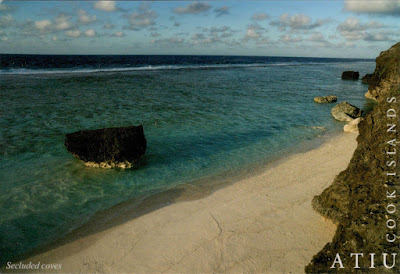 |
| 0787 Aoraki/Mt Cook |
Posted on 09.08.2013, 09.04.2016
Located in the south-west corner of South Island, Te Wähipounamu (Māori for "the place of greenstone") covers 10% of New Zeland's landmass, and exhibits many examples of the tectonic, climatic, and glacial processes that have shaped the earth, but is also the largest and least modified area of New Zealand's natural ecosystems. Inscribed on the World Heritage List in 1990, the site incorporates several national parks: Aoraki/Mt Cook, Fiordland, Mt Aspiring and Westland. A Maori association with the area falls into three broad categories: mythological, traditional history and ethnological. All these values are contained within the tradition of the Ngai Tahu tribe.
 |
| 2449 Westland Tai Poutini National Park - Franz Josef Glacier and Fox Glacier |
As the largest and least modified area of New Zealand's natural ecosystems, the flora and fauna has become the world's best intact modern representation of the ancient biota of Gondwana. The distribution of these plants and animals is inextricably linked to the dynamic nature of the physical processes at work in the property. The region contains outstanding examples of plant succession after glaciation, with sequences along altitudinal (sea level to permanent snowline), latitudinal (wet west to the dry east), and chronological gradients (fresh post-glacial surfaces to old Pleistocene moraines).
 |
| 2449 Westland Tai Poutini National Park - Franz Josef Glacier and Fox Glacier (1) |
Aoraki/Mount Cook National Park is located near the town of Twizel, and covers over 700km². Glaciers cover 40% of the park area, which houses 19 of the New Zealand's 20 peaks over 3,000m. The mountains of the Southern Alps in general are young, less than ten million years old, and are still building. Aoraki/Mount Cook is the highest mountain in New Zealand (3,754m), and consists of three summits lying slightly south and east of the main divide, the Low Peak, Middle Peak and High Peak, with the Tasman Glacier to the east and the Hooker Glacier to the west.
 |
| 2449 Westland Tai Poutini National Park - Franz Josef Glacier and Fox Glacier (2) |
According to Māori legend, Aoraki was a young boy who, along with his three brothers, were the sons of Rakinui, the Sky Father. On their voyage around the Papatuanuku, the Earth Mother, their canoe became stranded on a reef and tilted. Aoraki and his brothers climbed onto the top side of their canoe. However, the south wind froze them and turned them to stone. Their canoe became the Te Waka o Aoraki, the South Island. Aoraki, the tallest, became the highest peak, and his brothers created the Kā Tiritiri o te Moana, the Southern Alps.
 |
| 2449 Westland Tai Poutini National Park - Franz Josef Glacier and Fox Glacier (3) |
Westland Tai Poutini National Park covers 1,175 km² and extends from the highest peaks of the Southern Alps to a wild and remote coastline, bordering the Aoraki/Mount Cook National Park along the Main Divide. Included in the park are glaciers, scenic lakes and dense temperate rainforest, as well as remains of old gold mining towns along the coast. Franz Josef Glacier (12km long), Fox Glacier (13km long) and a third glacier descends from the Southern Alps to less than 300m above sea level, into temperate rainforest.
















.jpg)

.jpg)

.jpg)
+-+Waihi,+the+Heart+of+Gold.jpg)
+-+Waihi,+the+Heart+of+Gold+spate.jpg)











